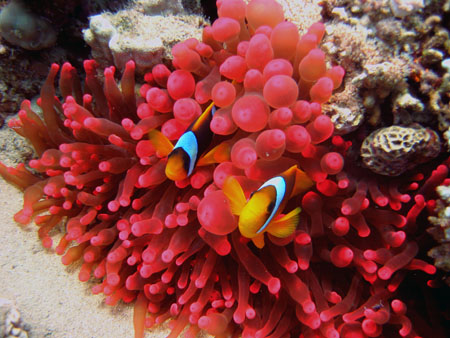|
|
| Public domain image |
Objects appear larger and hence closer underwater. Many novice divers and underwater photographers reach out to touch an object only to discover it is further away than expected. Refraction occurs as light passes from the water into the glass of a diver's face-mask, and as it emerges from the glass in to the air in front of the face. The degree of magnification, which is caused by the refraction of light, is significant. Objects appear 33% larger than they actually are, a magnification of 4:3, and hence 25% closer. However, experienced divers say that the underestimation of distances appears to reverse and become overestimation when objects are much further away. This effect is related to the clarity of the water. With excellent visibility, perhaps as much as 50 metres, the phenomenon of distance overestimation is experienced only when objects are far away but, when lower visibility prevails, overestimation of distances may be experienced when observing much closer objects. These combined effects make errors of judgement common when observing size, distance, depth, and consequently speed of movement.
Similar magnification affects a camera and lens housed in an underwater casing. Light is refracted as it passes through the glass plate in to the air within the housing. The effect is to increase the focal length of a lens by about 25%. Camera housings fitted with domed ports are used to correct this problem. Nevertheless, both flat and domed ports have their advantages and disadvantages.







